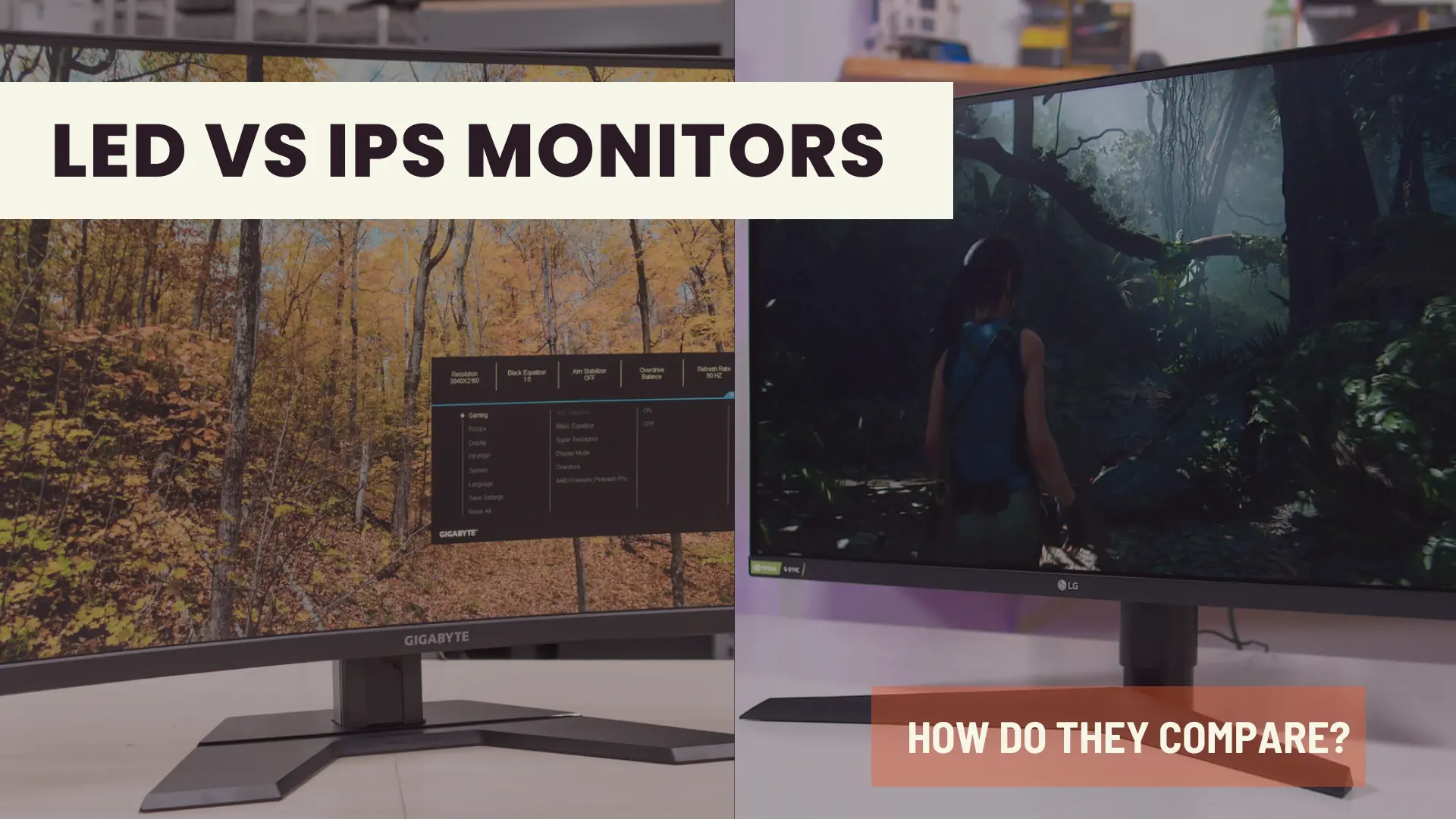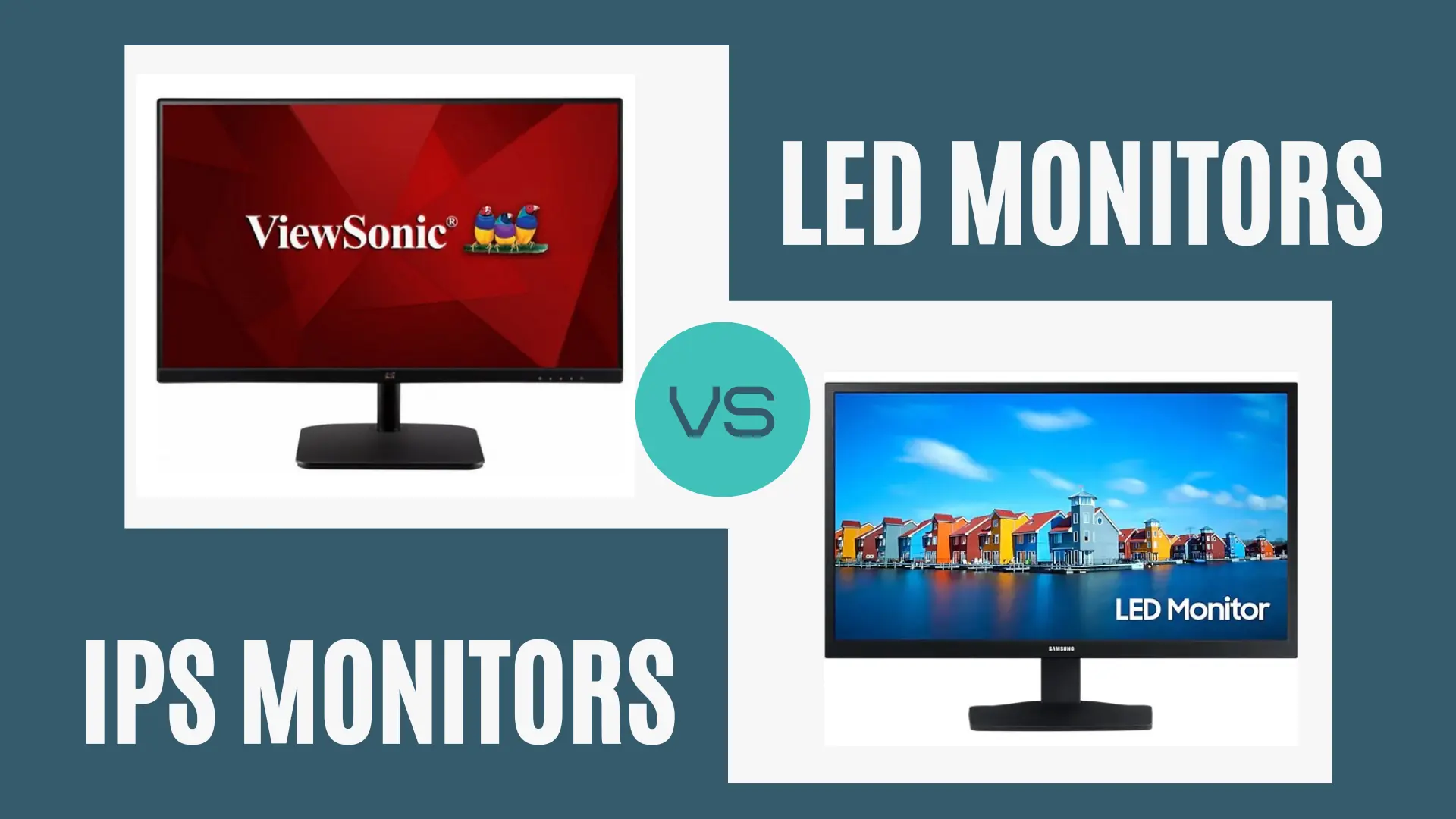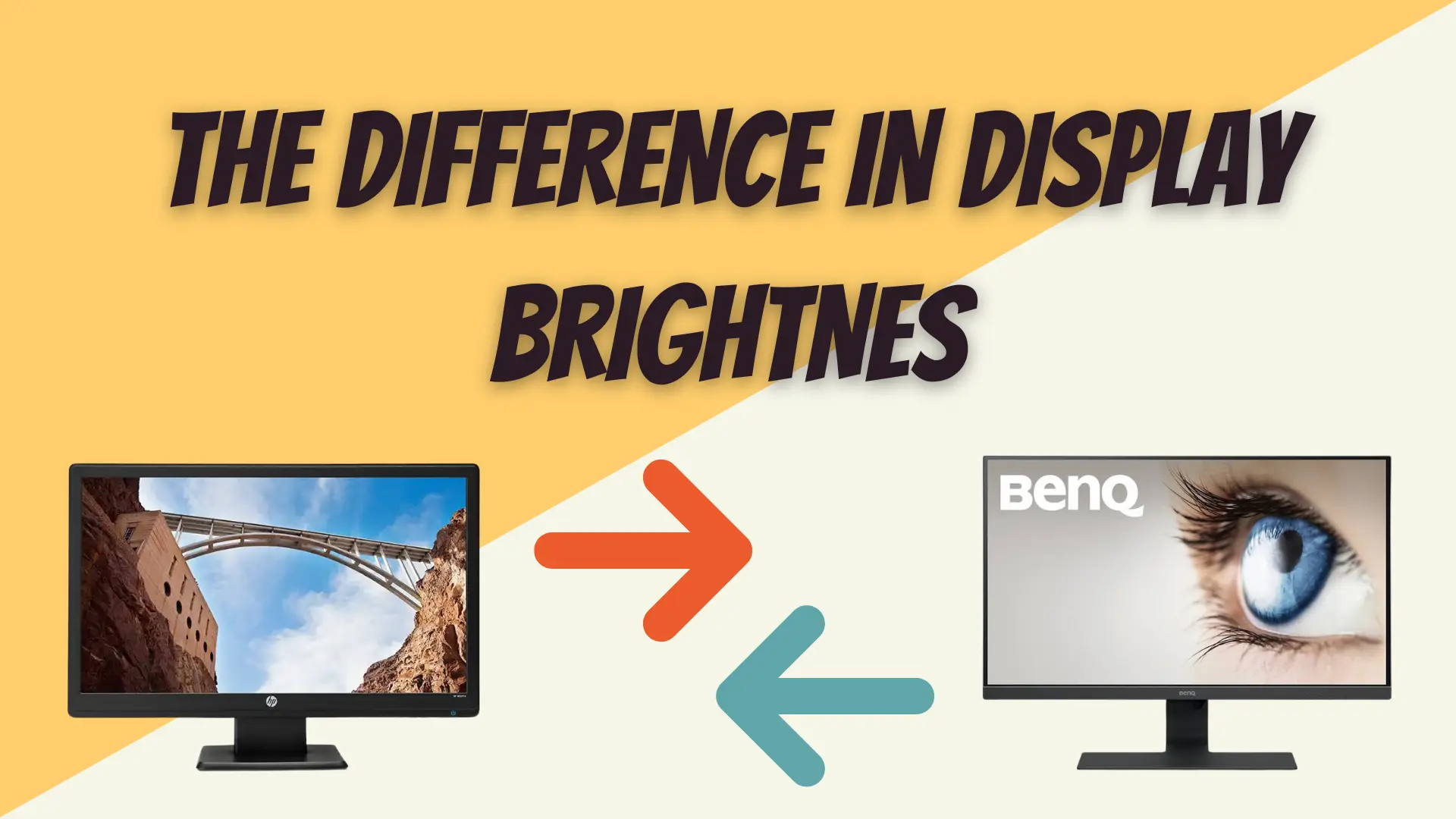LED vs IPS Monitors: How Do They Compare?

In recent years, there has been a big shift in the monitor market towards LED monitors. Many people believe that these monitors provide better image quality than IPS displays. But is this true? Which one is better? In this article, we will compare the two types of monitors and see which one might be the better option for you.
What Is LED and What Are LED Monitors?
Light emitting diodes (LEDs) are semiconductor devices that emit visible light when an electric current is applied. They are made of materials such as gallium arsenide, aluminum gallium arsenide, and indium phosphide. LEDs are used in a variety of applications, including traffic signals, automotive lighting, LCD backlighting, and illumination.
LED monitors are an emerging technology in the field of computer displays. They are distinguished from traditional LCD monitors by their use of light-emitting diodes (LEDs) to produce images. This results in a number of advantages, including superior image quality, improved energy efficiency, and a smaller environmental impact.
What Is IPS and What Are IPS Monitors?
IPS stands for “in-plane switching.” It is a technology used in LCD monitors and flat-screen TVs that improves viewing angles and color reproduction. IPS panels have a wider viewing angle than traditional TN (twisted nematic) panels, meaning colors stay more consistent no matter where you are sitting in relation to the screen. They also produce truer colors due to their increased color depth.
IPS (In-Plane Switching) can offer superior viewing angles and color reproduction as compared to traditional twisted nematic (TN) LCD monitors due to the fact that IPS panels use a transistor at every pixel, allowing for more accurate color reproduction and improved viewing angles. Most IPS monitors also offer a wider range of brightness levels, making them ideal for use in both professional and personal settings. Here are the Best IPS MONITORS under 200 dollars.

How LED Monitors Work
When an LED monitor is turned on, a low voltage current passes through a series of electrodes that are in close proximity to a thin film of organic material. This material is sensitive to light, so when photons hit it, they cause electricity to flow through the material. This flow of electricity is what we see as the image on the screen.
LED monitors thus work by emitting light in a certain direction. This light is then received by a sensor on the other side of the monitor, which creates an image based on the light that was received. This image is then displayed on the screen.
How IPS Monitors Work
IPS monitors work by using a system of backlights and filters to create a more accurate image on the screen. This is done by splitting the light coming from the back of the monitor into different colors and then shining them through different filters. By doing this, the monitor is able to create a more true-to-life image since it is not affected by the angle at which you are viewing it.
Just like LED monitors, IPS monitors have a backlight that shines through the LCD panel from behind, instead of from the side as with traditional CCFL backlit monitors. This means that images on an IPS monitor will look the same no matter which angle you view them from, making them ideal for use in shared workspaces or multiple-monitor setups.
LED and IPS Monitors: How Do They Compare
The two differ in many ways, but some people may not know the differences. We have listed them below:
1. The Difference in Color Reproduction
IPS monitors are known for their ability to better reproduce colors, while LED monitors are not as good at color reproduction. This is because IPS monitors use in-plane switching technology to produce images, while LED monitors use light-emitting diodes. This difference in technology results in a difference in color reproduction.
2. The Difference in Viewing Angles
LED and IPS monitors both have their own benefits, but there is a clear difference in viewing angles. LED monitors are backlit with light-emitting diodes, which can create a brighter image and are often thinner than IPS monitors. However, IPS monitors offer better viewing angles due to the use of in-plane switching technology. This means that colors stay consistent no matter where you are sitting in relation to the monitor. This difference can be important for some applications, such as photo editing, where it is important to be able to see the image accurately from all angles.
3. The Difference in Black Levels
LED monitors offer superior black levels when compared to IPS monitors. This is due to the way that LEDs emit light and the way IPS panels reflect light. When viewing a dark scene on an LED monitor, black levels will be darker and richer than on an IPS monitor. This is because the LEDs in the monitor are actually turned off when displaying black, while the IPS panel reflects light from other parts of the screen to create the illusion of darkness.
4. The Price Differences
IPS monitors are becoming more popular because of the high-quality image they provide. However, they are also more expensive than LED monitors. The IPS monitor costs more because the panel is made with a higher quality glass that is able to display a wider range of colors. LED monitors are cheaper to produce, so they are less expensive for consumers.
5. The Difference in Display Brightness (CD/M²)

LED and IPS monitors differ in terms of the brightness of their display (CD/M²). LED monitors are typically brighter than IPS monitors, although this is not always the case. The difference in brightness can be significant, particularly if you plan to use your monitor for professional purposes. If you need a monitor with a high level of brightness, then an LED monitor is the best option. However, if you are looking for better color reproduction, then an IPS monitor is a better choice.
6. Backlight Differences: Edge-Lit and Direct-Lit
Edge-lit monitors use LEDs around the edge of the screen to light it up. Direct-lit monitors have LEDs directly behind the screen that light it up. Both LED and IPS have some makes and models that offer this. Generally though, base-level LED and IPS monitors both use a backlight to produce an image on the screen. However, the way that light is projected differs between the two types of monitors. An LED monitor uses a series of light-emitting diodes to project light directly onto the screen. An IPS monitor uses a white backlight that is spread evenly across the entire screen by a panel of IPS crystals. This creates a more natural and consistent image than an LED monitor.
7. Contrast Ratio Differences: Static and Dynamic
Another difference between LED and IPS monitors is how they handle static and dynamic content. An LED monitor is better at displaying static images, while an IPS monitor is better at displaying dynamic content. This means that if you mostly use your computer for tasks like browsing the internet or working with documents, an LED monitor is a better choice. If you watch a lot of movies or play video games, however, an IPS monitor would be a better choice.
8. The Difference in Colour Accuracy: Delta E and Gamma Correction
A monitor’s ability to display colors accurately is measured by its Delta E value. A Delta E value of less than 3 is considered to be excellent, while a value of more than 6 is considered poor.
The two monitor types differ in their color accuracy- LEDs tend to have a bluer hue, while IPS monitors have more accurate colors (less delta E). Both LED and IPS monitors can be calibrated using gamma correction to adjust the brightness of each color pixel on the screen. This is an important step in achieving accurate colors, as monitors can often have different default gamma settings.
9. The Difference in Power Consumption
LED monitors consume less power than IPS monitors. This is because LED monitors use a backlight system that is more energy efficient than the backlight system used in IPS monitors. LED backlights are also more efficient because they emit light in a specific direction, whereas IPS backlights emit light in all directions. This results in less wasted energy and a longer battery life for laptops and other mobile devices that use LED. LED monitors typically use around 15-30 watts of power, while IPS monitors can use upwards of 60 watts.
10. The Difference in Shade and Hue
A recent study by DisplayMate compared the shade and hue of six different IPS and LED monitors. The study found that the IPS monitors were more accurate than the LED monitors, with less variation in hue and shade at different viewing angles. The LED monitors were brighter overall, but there was a noticeable difference in the shade and hue between the two types of monitors. So if you’re looking for an accurate, consistent picture quality, go with an IPS monitor. If you’re looking for a brighter screen with good energy efficiency, go with an LED monitor.
11. The Difference in Response Time: Grey to Grey (G2G)
LED monitors typically have a faster response time than IPS monitors. This is because the LED backlight can be turned on and off very quickly, while the IPS monitor needs time to change the light intensity. This is measured in “grey to grey” (G2G) response time, which is the amount of time it takes from one shade of grey to another.
This is important for gamers who want to avoid any lag or delay between pressing a button and seeing the results on-screen. However, for most other tasks such as web browsing or watching movies, an IPS monitor is more than adequate. Also check out, why high refresh rate is important for gaming.
12. The Difference in Input Lag: (ms)
LED and IPS monitors differ in their input lag (ms), which is the time it takes for the monitor to show the image that is being sent to it. This can be important for gamers who need to respond quickly to on-screen action. LED monitors typically have less input lag than IPS monitors. This is because this type of monitors are used for gaming. More than that, LED monitors typically use a technology called “frame skipping” which essentially skips frames to display the image faster, while IPS monitors typically use a technique called “frame doubling” which creates a duplicate frame and displays it twice, resulting in more input lag. So, if you are looking for a monitor with low input lag, an LED monitor is your best bet.
13. Availability: How Do They Differ?
LED monitors are available in most computer stores, and the same can also be said for IPS monitors – they too, are becoming more widely available. However, there is still a difference in purchase parity; LED monitors are generally cheaper and as such, can be said to be more widely available than IPS monitors. The main reason for this is that IPS monitors are typically used for graphics design and other professional applications, whereas LED monitors are used for general computing.
14. The Difference in Durability
LED monitors are more durable than IPS monitors. LED monitors use a light-emitting diode backlight, while IPS monitors use a conventional cold-cathode fluorescent lamp backlight. This difference in technology makes LED monitors more reliable and longer lasting. Conversely, a downside to LED monitors is that they can be more prone to damage if they are bumped or dropped. In contrast, IPS monitors are built to be more durable and can withstand more abuse.
15. The Difference in Slimness
LED monitors are typically slimmer in profile than IPS monitors. This is because LED backlights do not require as much depth as the backlights which are used in IPS panels. This difference in slimness is most noticeable in desktop monitors, where the depth of the backlight is more visible than in laptops or mobile devices. A few IPS monitors are also available in slim form factors, but they use more power and are unlikely to last as long as LED monitors.
16. Which Is Likely To Hurt Your Eyes More (on a Short Term Basis)?
There is no definitive answer to this question, as it will depend on the individual and the specific amount of time they spend in front of their monitor each day. Some people find that IPS monitors cause less eye fatigue, while others find that LED monitors are less harsh on their eyes.
In general, however, most people find that LED monitors tend to be harsher on the eyes than IPS monitors. This is because LED monitors generally have a bluish tint to them, while IPS monitors tend to blend warmer colors. This can be important for people who need to work on color-sensitive projects or who spend a lot of time in front of the screen.
17. Which Is Likely To Affect Your Eyes More (on a Long Term Basis)?
So, which of an LED or an IPS monitor is likely to affect your eyes more on a long term basis? A study by John P. D’Ambrosio and colleagues at Brigham and Women’s Hospital and Harvard Medical School set out to answer this question.
They had participants look at images from both types of monitors every day for several years and measured the amount of time it took for participants’ eyes to become show signs of problems. The study found that LED monitors were less likely to cause long term eye problems than IPS monitors. However, the difference was small and not statistically significant.
In other words, there is no clear winner when it comes to which type of monitor is better for your eyesight in the long run.
18. The Difference in Resolution
Entry level IPS monitors have a higher resolution than LED monitors. This is because the pixels in an IPS monitor are smaller than those on an LED monitor. A entry level IPS monitor has a resolution of 2560 x 1440, while an entry level LED monitor has a resolution of 1920 x 1080.
This means that you can see more details on an average IPS monitor than you can on an average LED monitor. This is especially noticeable when you are looking at text or pictures.
19. The Differences in Relation to Screen Glare
One of the biggest differences between IPS and LED monitors is screen glare. LED monitors tend to produce more glare than IPS monitors, especially when viewed from an angle. This can be a major issue if you are using your monitor in a bright environment or share it with someone else.
IPS monitors generally have less glare, making them the better choice for most people.
20. The Difference in Recommendation for Professional Use
LED monitors are typically recommended for most types professional use because they have a higher contrast ratio and faster response time than IPS monitors. However, IPS monitors offer better color accuracy and viewing angles, so they are often recommended for graphic design or photo editing work.
LED vs IPS Monitors: Which Is the Newer Model?
LED monitors were first introduced in 1977 as a way to improve the display quality of televisions. IPS monitors were not released until 1996 as a way to improve the color accuracy and viewing angles of displays. While LED monitors have been around for a longer time, IPS monitors have also become popular in recent years due to their improved image quality.
So, Which One Is Better?
IPS (In-Plane Switching) monitors are known for their accurate colors and wide viewing angles. They are a popular choice for graphic designers, photographers, and other professionals who need to view images accurately from various angles. LED (Light-Emitting Diode) monitors are older technology, but it has stuck around, and for good reason. They offer many advantages over traditional CCFL backlit monitors, including improved image quality, decreased power consumption, and a thinner profile.
So which is the best monitor type for you? If you need accurate colors and wide viewing angles, then an IPS monitor is the best choice. If you are looking for a monitor with better image quality and energy efficiency, then an LED monitor is the best option.






